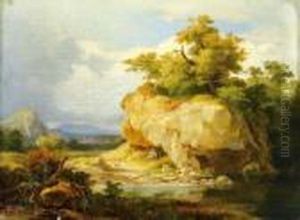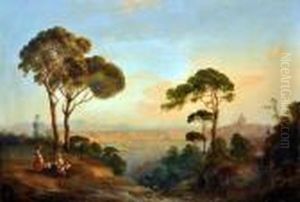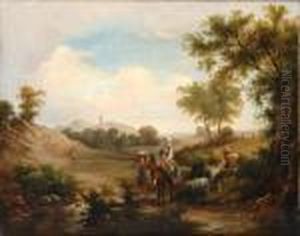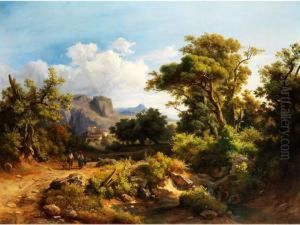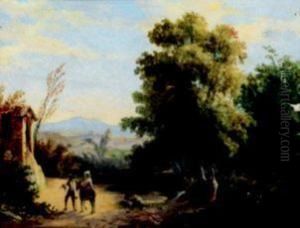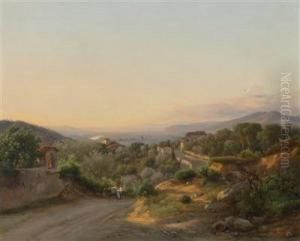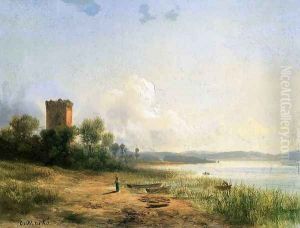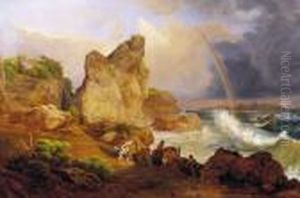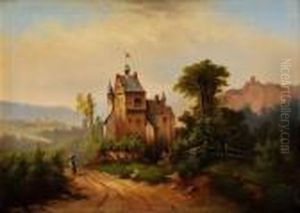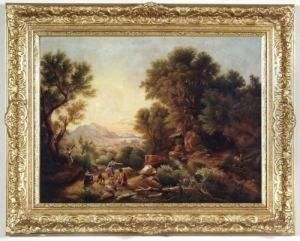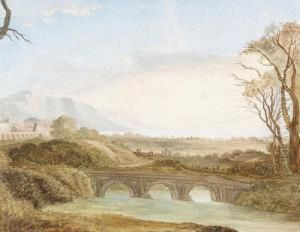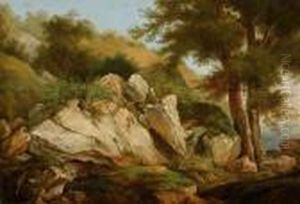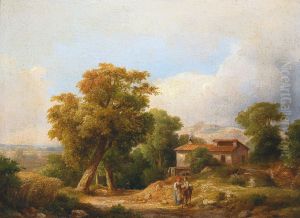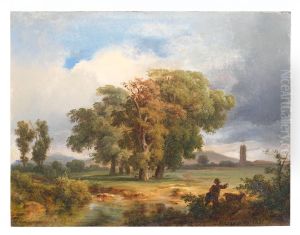Karoly Marko Paintings
Károly Markó, also known as Károly Markó the Elder, was a renowned Hungarian landscape painter who played a significant role in the development of Hungarian landscape painting in the 19th century. Born on September 24, 1791, in the town of Letavértes, Hungary, Markó began his artistic journey at a young age. Initially, he studied under the painter Istvan Dorfmeister and later moved to Vienna to continue his education. In Vienna, he was greatly influenced by the work of classical landscape painters, which led to the development of his own unique style that combined classical landscape painting techniques with his personal artistic vision.
Markó's early works were characterized by careful attention to detail and a strong emphasis on the harmony between human figures and nature. His talent did not go unnoticed, and he received support from influential patrons, which allowed him to travel extensively throughout Italy. During his time in Italy, particularly in Rome, he was exposed to the works of Italian masters, and this exposure further refined his style. His paintings often depicted idyllic landscapes with mythological or biblical scenes, executed with precise detail and a warm, harmonious palette.
In 1832, Markó settled in Italy permanently and became a central figure in the community of Hungarian artists who were also living and working there. Although he remained based in Italy for the rest of his life, his work continued to be celebrated in Hungary and across Europe. Markó's landscapes were not only appreciated for their aesthetic qualities but also for their ability to evoke a sense of national identity and pride among the Hungarian people.
Károly Markó the Elder’s legacy was carried on by his sons, Károly Markó the Younger and András Markó, who were also accomplished landscape painters. Throughout his career, Markó exhibited in various prestigious venues, including the Vienna Academy exhibitions, and his work was collected by notable figures of the era. He passed away on June 28, 1860, in Villafranca di Verona, Italy. Today, Markó is remembered as one of Hungary’s foremost landscape artists, and his work continues to be admired for its serene beauty and historical significance in Hungarian art.

